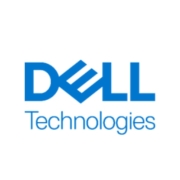Primarily, we have an in-house architecture where all our IT infrastructure is hosted on data centers owned by us, and Dell PowerVault is used for all the critical data stored in our infrastructure. For example, we have our local file server, local database running a SQL server, application server, and backups all stored in Dell PowerVault storages configured as presentable volumes to each of these servers or resources. These PowerVault storages are redundant, so we don't go by only one storage box, adding the DEU and expansion boxes on top of it, with RAID configuration for multiple disk redundancy.
Furthermore, we have a D2D and D2T strategy, where disk-to-disk is the first level backup, and secondary level storage includes a tape library, so disk-to-tape, meaning all the data on the disk is also copied onto tape and stored as a secondary copy. Overall, Dell PowerVault stores all the data in our 70% hosted infrastructure, which includes proprietary data, databases, and user data in our on-prem data center.
Additionally, in the contact center industry, we utilize solutions such as Verint and NICE for contact center recording and analytics, with the storage for calls and analytic outputs hosted in the backend on Dell PowerVault.
Users need to establish a use case for using Dell PowerVault, such as whether they want to store data for frequent access, long-term retention, or recycling data with incremental updates. Building a use case is essential since different storage solutions cater to different requirements.
When visiting Dell's website to search for PowerVault, users will encounter a PowerVault builder that helps assess requirements and suggest options. As a data owner, users must decide if they need JBOD, RAID 5, or RAID 6, and determine required storage space, such as 2.5 inch SAS or SSDs. Factors such as data type, access frequency, and required access speed assist in designing the infrastructure with Dell PowerVault as hardware. It's important to accurately size and configure the system, ensuring that choices around disk types and configurations align with their use case, as improper configurations can lead to poor performance. Users must understand their requirements correctly before seeking solutions from Dell to ensure they receive effective hardware.










